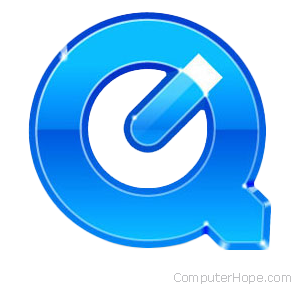How to record your computer screen
On your macOS, Windows, or Linux computer, to create a video that captures all actions performed, you can record your screen to a video file. Recording your screen can be useful to create video tutorials, or review something you did on your computer later.
Record your screen in macOS
Creating a recording

In macOS, the QuickTime Player application can create screen recordings. This app comes installed by default on all Apple computers. To record your screen using QuickTime Player, follow these steps.
- Open the QuickTime Player application.
- Select File from the menu bar.
- Select New Screen Recording.
- Click the circular red Record button on the screen recording window.
- Click anywhere on the screen to begin recording the entire screen, or click-and-drag to select an area to record.
- When finished recording, click the Stop button from the menu bar.
- To preview your recording, click the Play button.
Saving a recording
To save the recording to your computer, follow these steps.
- Select File from the menu bar.
- Select the Export As option.
- Select 1080p or your desired resolution.
- Name the video file and choose a location to save the file.
- Click Save.
Record your screen in Windows
Windows does not have any built-in screen recording features. To create a screen recording on a Windows computer, you must use third-party software or a video capture card. Below lists popular screen recording applications for Windows.
- Bandicam
- Camtasia
- Honeycam (Animated GIF/WebP)
- Microsoft Clipchamp
- NVIDIA ShadowPlay (Free for NVIDIA users)
- OBS (Open Broadcaster Software) (Free)
- How to record your screen in PowerPoint.
- ScreenPal
- VLC
Record your screen in Linux
A wide variety of free screen recorders are available for Linux.
- Freeseer — Screen recorder and screencaster with a focus on group presentations.
- Green Recorder — A simple screen recorder which outputs to MKV, AVI, MP4, WMV, or animated GIF.
- Kazam Screencaster — Capture screen recordings to VP8/WebM video.
- Krut Computer Recorder — Record video and sound from the screen to a QuickTime movie.
- OBS — OBS is a popular screencasting software can record your screen and audio to an ffmpeg-encoded video, e.g., MP4.
- Peek — A simple program to capture your screen to an animated GIF.
- RecordMyDesktop — Capture your screen's video and audio to Ogg Theora/Vorbis.
- ScreenStudio — Capture your desktop to video with ffmpeg, and optionally overlay text, images, or a webcam video stream.
- Snagit - Snagit is a screenshot and video capture program for Windows and macOS.
- SimpleScreenRecorder — Record synced audio and video from all or part of your desktop and for OpenGL programs, optionally record directly from the OpenGL buffer.
- VLC — VLC is a massively popular media player, and also a first-rate video recorder. To record your screen in VLC, open the View menu, and select Advanced Controls. Then, open the Media menu, and select Open Capture Device. Set Capture mode to Desktop. Click Play to show a preview of how your desktop will be recorded. Click the red Record button to begin recording.
- VokoScreen — VokoScreen is a screen recorder with a focus on preparing demonstration videos. It can magnify part of the screen, show key presses, and show mouse clicks.
